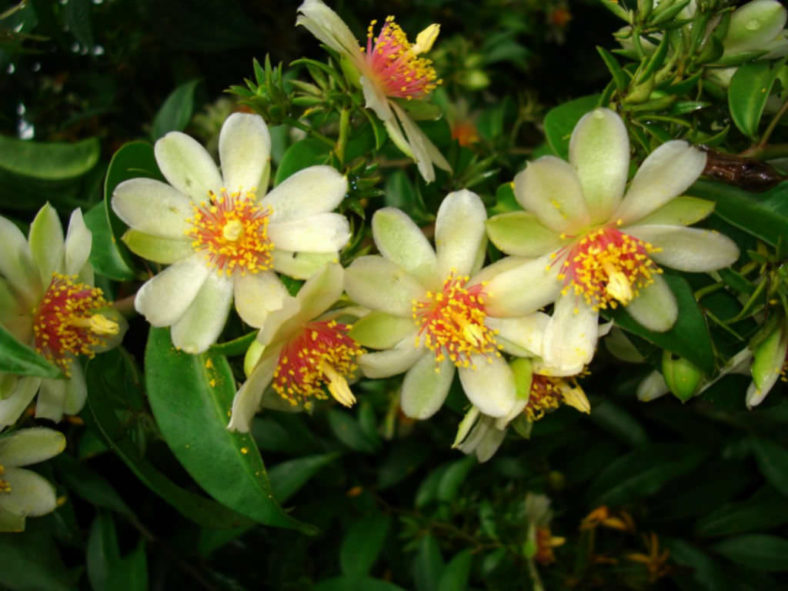These tropical cacti, often called leaf cacti, are pretty unusual and bear many characteristics unlike any other plants in their family. Instead, Pereskia cacti usually look more like plants from other families. For instance, they often have large, bright green leaves and long stems, two characteristics uncommon among cacti. There is also a lot of diversity among leaf cacti regarding growth habits and preferred treatment.
Pereskias qualify as cacti because their spines develop from aureoles, a distinctive characteristic of the Cactus Family. They can be divided into Leuenbergerias and Pereskias. Pereskias are usually found in tropical areas, while Leuenbergerias are found farther north. Many of these plants have lovely foliage. For instance, Pereskia grandifolia, used by native Brazilians for its medicinal properties, has large pinkish flowers that develop from the end of dense inflorescences.
Pereskias are often used as flowering hedges, and those varieties that carry edible fruits, like Pereskia aculeata, are also grown to be eaten. Unfortunately, many plants in the Pereskia genus are rare, and there is so much diversity within the genus that it is difficult to generalize these plants' characteristics. Still, Pereskia is undoubtedly one of the most interesting and unusual genera of cacti.
Growing Conditions
Light: Lots of direct sunlight every day. Like most cacti, Pereskias will benefit from tons of light exposure.
Water: Err on the side of underwatering rather than overwatering. Pereskias can be watered fairly infrequently and survive.
Temperature: There is some variance depending on the species' place of origin, but these are generally tropical plants that require warm temperatures.
Soil: Use a typical cactus potting soil containing some organic material and ensure good drainage to avoid damaging the roots.
Fertilizer: Feed regularly with a balanced, water-soluble cactus fertilizer to increase their propensity to bloom.

Propagation
These cacti can be propagated fairly easily by taking cuttings. Snip off a piece about a few inches long, treat with a good rooting hormone, and plant in a cactus potting mix. It can take a little while to root, but they are not picky about propagation and should grow easily in a new environment. Remember to keep them in a warm, moist area.
Repotting
Pereskias like dry conditions and do not need to be repotted often, but it is still a good idea to refresh their soil by repotting occasionally. Be careful when repotting any cactus so as not to get hurt by its sharp spines, and lift the plant from its mix and replace it in a new container before backfilling it with soil. Do not water for a few weeks after repotting. The plant is still acclimating to its new container.
Grower's Tips
As with many cacti, Pereskias can be almost ignored and still flourish. One of the major advantages that succulents pose as houseplants is their ease, and overwatering or overfeeding them is a bigger danger than neglecting them because it can damage their roots. If you repot them, remember to leave them alone briefly to avoid overstressing them, and keep an eye out for common houseplant pests. Many of these cacti can not be grown as houseplants anyway due to their shrubby growth habit, and others are very rare, but when you do find out, Pereskias can be good in cultivation.
Source: about.com
Links
- Back to genus Pereskia
- Succupedia: Browse succulents by Scientific Name, Common Name, Genus, Family, USDA Hardiness Zone, Origin, or cacti by Genus